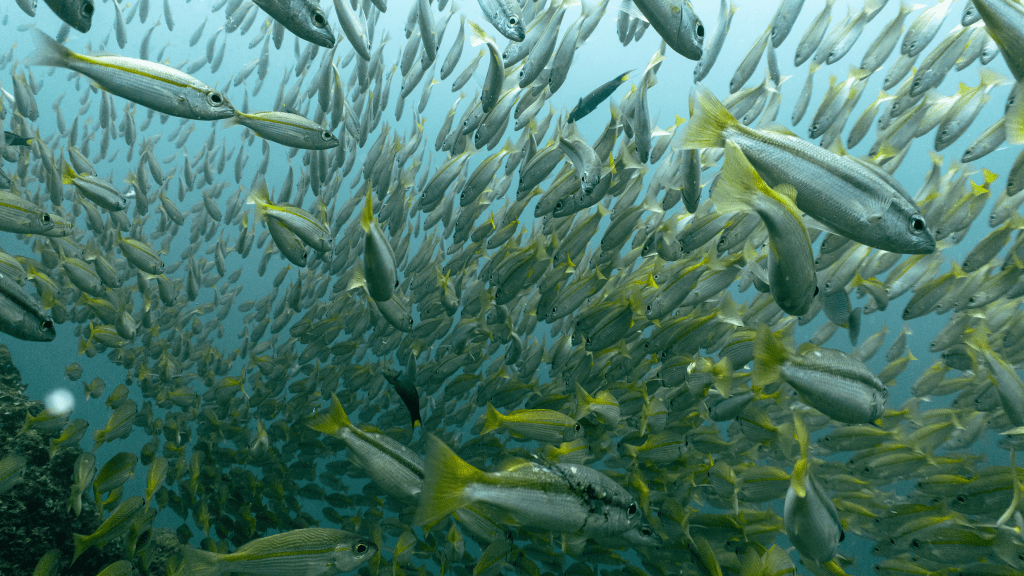Bigeye snapper

The Bigeye snapper (Lutjanus lutjanus) is a medium-sized fish, typically reaching lengths of up to 35 cm, although it can grow up to 60 cm. It has a robust, elongated body with a slightly compressed shape. The fish is distinguished by its large eyes, adapted for vision in low-light conditions. Its coloration is typically silvery or pale yellow with a noticeable dark spot at the base of the pectoral fin. The fins are yellowish, and the dorsal fin has a slightly dark margin.
It inhabits the Indo-Pacific region, including the Red Sea and the eastern coast of Africa to the central Pacific Ocean. It populates coral reefs, lagoons, and outer reef slopes, typically at depths ranging from 10 to 100 meters. These fish often form large schools.
The Bigeye snapper reproduces through external fertilization. During the spawning period, which often occurs in large aggregations, females release eggs into the water column, and males simultaneously release sperm to fertilize them. The eggs are pelagic, floating in open water until hatching. The larvae then drift with the plankton before settling and transforming into juveniles.
It feeds mainly on small fish and crustaceans. They often hunt in groups, using their large eyes to detect prey in low-light conditions. They also consume various invertebrates.

